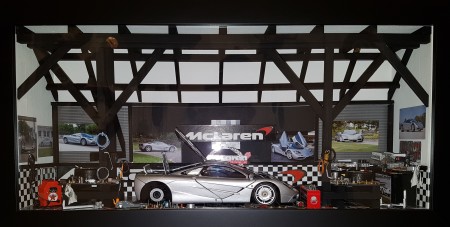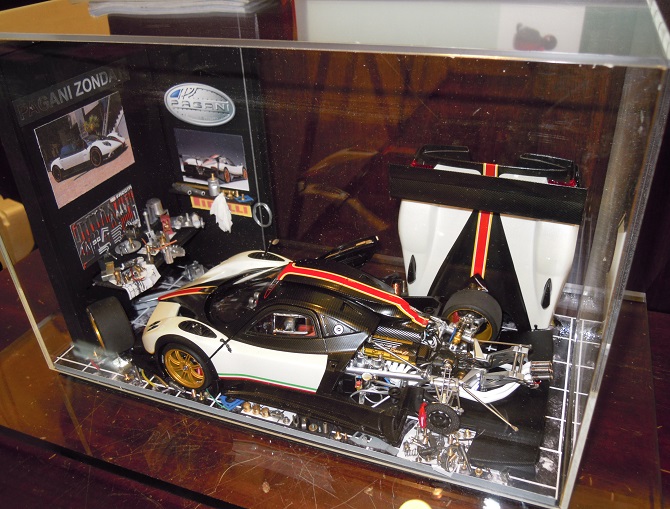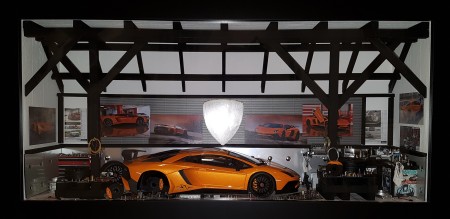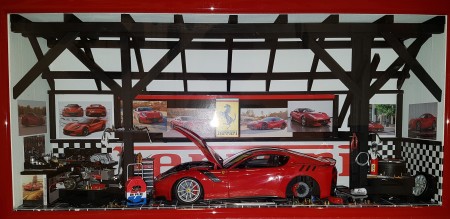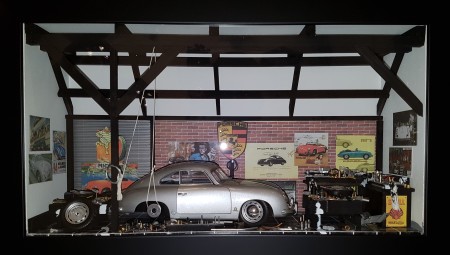Car Display Box – Mclaren F1
$2,080.00
Car Display Box by Patrick Richards. Dimensions: 62cm x 32cm x14cm
The McLaren F1 is powered by the BMW S70/2 V12 engine. On 31 March 1998, the XP5 prototype with a modified rev limiter set the Guinness World Record for the world’s fastest production car, reaching 240.1 mph (386.4 km/h),[2] surpassing the modified Jaguar XJ220’s 217.1 mph (349 km/h) record from 1992.
For shipping overseas, please email enquiry or WhatsApp +6597186361
The car features numerous proprietary designs and technologies; it is lighter and has a more streamlined structure than many modern sports cars, despite having one seat more than most similar sports cars, with the driver’s seat located in the centre (and slightly forward) of two passengers’ seating positions, providing driver visibility superior to that of a conventional seating layout. It was conceived as an exercise in creating what its designers hoped would be considered the ultimate road car. Despite not having been designed as a track machine, a modified race car edition of the vehicle won several races, including the 1995 24 Hours of Le Mans, where it faced purpose-built prototype race cars. Production began in 1992 and ended in 1998. In all, 106 cars were manufactured, with some variations in the design.[3]
1 in stock
Description
Car Display Box by Patrick Richards
The McLaren F1 is powered by the BMW S70/2 V12 engine. On 31 March 1998, the XP5 prototype with a modified rev limiter set the Guinness World Record for the world’s fastest production car, reaching 240.1 mph (386.4 km/h),[2] surpassing the modified Jaguar XJ220’s 217.1 mph (349 km/h) record from 1992.
The car features numerous proprietary designs and technologies; it is lighter and has a more streamlined structure than many modern sports cars, despite having one seat more than most similar sports cars, with the driver’s seat located in the centre (and slightly forward) of two passengers’ seating positions, providing driver visibility superior to that of a conventional seating layout. It was conceived as an exercise in creating what its designers hoped would be considered the ultimate road car. Despite not having been designed as a track machine, a modified race car edition of the vehicle won several races, including the 1995 24 Hours of Le Mans, where it faced purpose-built prototype race cars. Production began in 1992 and ended in 1998. In all, 106 cars were manufactured, with some variations in the design.[3]

